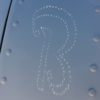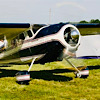23 Nov 2025, 02:38 [ UTC - 5; DST ]
|

| Username Protected |
Message |
|
Username Protected
|
Post subject: Re: Mitsubishi for first twin  Posted: Posted: 24 Jan 2015, 12:49 |
|
 |

|
|
 |


Joined: 05/29/09
Posts: 4166
Post Likes: +2990
Company: Craft Air Services, LLC
Location: Hertford, NC
Aircraft: D50A
|
|
Username Protected wrote: Ok, but the same little power at altitude cost the same gas down, with the only difference being the extra fuel burned in the climb. At altitude, you go a lot faster. If the distance traveled is insufficient to make the juice worth the squeeze, stay low. Otherwise, higher is better. This is why nobody is seriously worried about setting up a turbine powered airplane to be super efficient. They are capable of high altitudes, fast speeds, and reasonable although not miserly fuel consumption. Fly fast, fly high, and have fun. All of this other stuff is just a fun exercise for the brain.
_________________
Who is John Galt?
|
|
| Top |
|
|
Username Protected
|
Post subject: Re: Mitsubishi for first twin  Posted: Posted: 24 Jan 2015, 12:54 |
|
 |

|
|


Joined: 12/03/14
Posts: 20763
Post Likes: +26255
Company: Ciholas, Inc
Location: KEHR
Aircraft: C560V
|
|
Username Protected wrote: Sorry Mike, but in this case you're wrong. Max range yes, not endurance. Those equations are based on the assumption that the engine efficiency doesn't change with power setting or altitude. The engine has been idealized. This is particularly untrue for a single shaft turboprop like the TPE331 which runs at constant speed regardless of power. You will learn. Mike C.
_________________
Email mikec (at) ciholas.com
|
|
| Top |
|
|
Username Protected
|
Post subject: Re: Mitsubishi for first twin  Posted: Posted: 24 Jan 2015, 13:14 |
|
 |

|
|


Joined: 12/03/14
Posts: 20763
Post Likes: +26255
Company: Ciholas, Inc
Location: KEHR
Aircraft: C560V
|
|
Username Protected wrote: Turboprop engine is more efficient higher, airframe is more efficient higher. Agreed on the first. I haven't seen anything to suggest the second is correct.
At constant power, the airframe goes further, as this example from a 421C shows:
Attachment: 421c-range-1.png
Going further on same power is more efficiency.
Real life airplane, real life example. Note that the range above INCLUDES the extra fuel needed to climb to the altitude given.
Mike C.
Please login or Register for a free account via the link in the red bar above to download files.
_________________
Email mikec (at) ciholas.com
|
|
| Top |
|
|
Username Protected
|
Post subject: Re: Mitsubishi for first twin  Posted: Posted: 24 Jan 2015, 13:33 |
|
 |

|
|
 |

Joined: 10/27/10
Posts: 10790
Post Likes: +6894
Location: Cambridge, MA (KLWM)
Aircraft: 1997 A36TN
|
|
Username Protected wrote: We're still mixing up KTAS with KIAS. It doesn't go further at same KIAS. According to Cessna's chart, constant % power doesn't yield constant indicated airspeed. (I'm totally confused now.)
Last edited on 24 Jan 2015, 13:35, edited 1 time in total.
|
|
| Top |
|
|
Username Protected
|
Post subject: Re: Mitsubishi for first twin  Posted: Posted: 24 Jan 2015, 13:35 |
|
 |

|
|

Joined: 08/18/13
Posts: 1152
Post Likes: +770
Aircraft: 737
|
|
|
Other than shooting an approach a week and landing with an engine shut off for proficiency, I'm not going to be using the A* until April. I'm kind of taken with my turboprop...
|
|
| Top |
|
|
Username Protected
|
Post subject: Re: Mitsubishi for first twin  Posted: Posted: 24 Jan 2015, 13:40 |
|
 |

|
|
 |

Joined: 01/31/10
Posts: 13631
Post Likes: +7766
Company: 320 Fam
Aircraft: 58TC
|
|
Username Protected wrote: At constant power, the airframe goes further, as this example from a 421C shows: Attachment: 421c-range-1.png Going further on same power is more efficiency. Real life airplane, real life example. Note that the range above INCLUDES the extra fuel needed to climb to the altitude given. Mike C. Good example. Now figure the KIAS at FL250, fly that speed KIAS at 1,000MSL. After the power reduction required to maintain that KIAS at 1,000', what happens to range at 1,000MSL?
_________________
Views are my own and don’t represent employers or clients
My 58TC https://tinyurl.com/mry9f8f6
|
|
| Top |
|
|
Username Protected
|
Post subject: Re: Mitsubishi for first twin  Posted: Posted: 24 Jan 2015, 13:52 |
|
 |

|
|


Joined: 12/03/14
Posts: 20763
Post Likes: +26255
Company: Ciholas, Inc
Location: KEHR
Aircraft: C560V
|
|
Username Protected wrote: It doesn't go further at same KIAS. The red line is constant 180 KIAS. Attachment: mu2m-9k-isa-specific-range.png Plane is MU-2M at 9,000 lbs, ISA temps, as published in POM (-6 engine). Held KIAS constant, plane specific range improves. Plane goes further on same fuel. This is typical of turboprops, slightly more so for TPE331 than for PT6. Mike C.
Please login or Register for a free account via the link in the red bar above to download files.
_________________
Email mikec (at) ciholas.com
|
|
| Top |
|
|
Username Protected
|
Post subject: Re: Mitsubishi for first twin  Posted: Posted: 24 Jan 2015, 14:26 |
|
 |

|
|
 |


Joined: 05/29/09
Posts: 4166
Post Likes: +2990
Company: Craft Air Services, LLC
Location: Hertford, NC
Aircraft: D50A
|
|
Username Protected wrote: Mike, I was talking about pistons in the Carson/421/Aerostar example. It doesn't hold true for TP's as you correctly point out. The reason that this is confusing for people is that there are three discussions going on. One discussion is about airframe efficiency. I think it has been correctly stated that the airframes are most efficient at max L/D. The faster you go above this number, the more energy you are going to have to expend per NM to stay aloft. Correct me if I am wrong, but Carson accepts that L/D max is most efficient but seeks to find a reasonable speed that allows for a faster and somewhat less efficient cruise without going too far into the region of diminishing returns. The second discussion is about engine efficiency. I think you will find that turboprop engines are most efficient at their max ITT. It's where the engine manufacturers publish their SFC for a reason. In practice, engines are set up to reach their max ITT at some altitude, temperature, and HP output close to where the engineers expect the airframe to be operated. That's why turbines seem to be most efficient at altitude. The third discussion is about the efficiency of the whole package. Yes turboprop airplanes are most efficient at high altitude but that is not because the airframe need to be high to gain efficiency, it is because the engines are set up that way. If they were set up for efficiency down low they wouldn't be capable of even climbing to higher altitudes. There is also the added bonus that the airframes are closer to their max L/D up high than they are down low since IAS drops with altitude.
_________________
Who is John Galt?
Last edited on 24 Jan 2015, 14:55, edited 1 time in total.
|
|
| Top |
|
|
Username Protected
|
Post subject: Re: Mitsubishi for first twin  Posted: Posted: 24 Jan 2015, 14:53 |
|
 |

|
|
 |


Joined: 05/29/09
Posts: 4166
Post Likes: +2990
Company: Craft Air Services, LLC
Location: Hertford, NC
Aircraft: D50A
|
|
Username Protected wrote: At constant power, the airframe goes further, as this example from a 421C shows: Attachment: 421c-range-1.png Going further on same power is more efficiency. Real life airplane, real life example. Note that the range above INCLUDES the extra fuel needed to climb to the altitude given. Mike C. I would wager that the reason range increases at constant power as altitude increases is that: 1. The engine efficiency stays the same 2. The aircraft is slowing down in terms of IAS and is flying closer to the ideal L/D max. 3. If the graph were continued far enough to get the IAS below L/D max, then you would see a reversal of the trend and range would begin to decrease Likewise, if you drew a graph for that airframe that showed range at a specific (static) altitude and varied IAS, with an engine capable of developing the same HP per pound of fuel across its range, you should see range increase until L/D max is reached, then begin to decrease as IAS increases.
_________________
Who is John Galt?
|
|
| Top |
|
|
Username Protected
|
Post subject: Re: Mitsubishi for first twin  Posted: Posted: 24 Jan 2015, 15:29 |
|
 |

|
|

Joined: 08/08/12
Posts: 1445
Post Likes: +940
|
|
Username Protected wrote: Mike, I was talking about pistons in the Carson/421/Aerostar example. It doesn't hold true for TP's as you correctly point out. The reason that this is confusing for people is that there are three discussions going on. One discussion is about airframe efficiency. I think it has been correctly stated that the airframes are most efficient at max L/D. The faster you go above this number, the more energy you are going to have to expend per NM to stay aloft. Correct me if I am wrong, but Carson accepts that L/D max is most efficient but seeks to find a reasonable speed that allows for a faster and somewhat less efficient cruise without going too far into the region of diminishing returns. The second discussion is about engine efficiency. I think you will find that turboprop engines are most efficient at their max ITT. It's where the engine manufacturers publish their SFC for a reason. In practice, engines are set up to reach their max ITT at some altitude, temperature, and HP output close to where the engineers expect the airframe to be operated. That's why turbines seem to be most efficient at altitude. The third discussion is about the efficiency of the whole package. Yes turboprop airplanes are most efficient at high altitude but that is not because the airframe need to be high to gain efficiency, it is because the engines are set up that way. If they were set up for efficiency down low they wouldn't be capable of even climbing to higher altitudes. There is also the added bonus that the airframes are closer to their max L/D up high than they are down low since IAS drops with altitude.
You are right about this! There is actually more than 3 completely different discussions going on. Much of it has very little to do with the original topic. At least, for a few pages, the discussion was about MU2's. Now, somehow, we are into aerodynamics and piston engines with just a pinch of the benefits of purposely overfilling an Aerostar (A*).

|
|
| Top |
|

|
You cannot post new topics in this forum
You cannot reply to topics in this forum
You cannot edit your posts in this forum
You cannot delete your posts in this forum
You cannot post attachments in this forum
|

Terms of Service | Forum FAQ | Contact Us
BeechTalk, LLC is the quintessential Beechcraft Owners & Pilots Group providing a
forum for the discussion of technical, practical, and entertaining issues relating to all Beech aircraft. These include
the Bonanza (both V-tail and straight-tail models), Baron, Debonair, Duke, Twin Bonanza, King Air, Sierra, Skipper, Sport, Sundowner,
Musketeer, Travel Air, Starship, Queen Air, BeechJet, and Premier lines of airplanes, turboprops, and turbojets.
BeechTalk, LLC is not affiliated or endorsed by the Beechcraft Corporation, its subsidiaries, or affiliates.
Beechcraft™, King Air™, and Travel Air™ are the registered trademarks of the Beechcraft Corporation.
Copyright© BeechTalk, LLC 2007-2025
|
|
|
|



